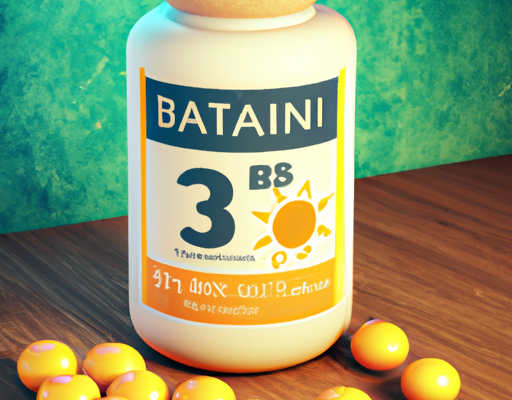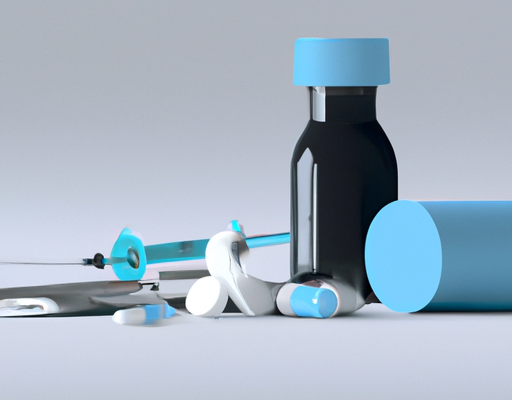Definition of Pimples
Pimples are a very common skin condition that affects people of all ages. They are caused by a variety of factors, including hormones, bacteria, and inflammation of the skin. Pimples can range from small, white bumps to large, red, painful lesions. They can appear on the face, neck, chest, back, and shoulders. What are the key differences between pimples and whiteheads?
- Pimples are raised, red bumps, while whiteheads are small, white bumps.
- Whiteheads are caused by clogged pores, while pimples are caused by a combination of factors.
- Pimples can be painful, while whiteheads are usually painless.
- Pimples can often be treated with topical creams, while whiteheads can usually be treated with a combination of topical creams and lifestyle changes.
Pimples can be an embarrassing and uncomfortable problem for many people, so it is important to understand the differences between pimples and whiteheads and how to treat them. With the right combination of treatments and lifestyle changes, it is possible to reduce the appearance of both types of bumps.
Definition of Whiteheads
Whiteheads, also known as closed comedones, are small bumps that appear on the surface of the skin. They are caused by a buildup of sebum, an oily substance produced by the skin, and dead skin cells blocking a pore. Whiteheads are similar to blackheads, but they are slightly different. Unlike blackheads, which have an open pore, whiteheads are closed, which means that the contents are trapped beneath the surface. Whiteheads are usually smaller than blackheads, and they are typically found in areas of the face that produce more oil, such as the forehead, nose, and chin. They can also appear on other parts of the body such as the chest, back, and arms. While they are not typically painful, they can be uncomfortable and can cause embarrassment to those who have them.
Causes of Pimples
Pimples and whiteheads are two of the most common skin conditions, but their causes can be different. Pimples, also known as acne, are caused by a number of factors, such as bacteria and hormones in the body, as well as pores that become clogged by dead skin cells. Oily skin is another major cause of pimples, since the oils on the skin mix with sweat, dirt, and other irritants, clogging up pores. Diet and stress levels also have an influence on pimples, as an increase in both may lead to higher skin irritation. Genetics also plays a role, as those with a family history of acne are more likely to develop them.
Causes of Whiteheads
Whiteheads, also known as closed comedones, are a type of acne. They are caused by a combination of factors, including hormones, genetics, and bacteria. Whiteheads are caused when the oil and dead skin cells that are normally found on the surface of the skin become trapped in a pore and build up, forming a white dot in the center. This is due to the pore being blocked or blocked by excess oil and dirt. Whiteheads can be treated with over-the-counter medications, such as salicylic acid, or with prescription medications from a doctor. Prevention includes avoiding excessive sweating, keeping the skin clean, and avoiding greasy products. Additionally, using an oil-free moisturizer can help prevent whiteheads from forming.
Types of Pimples
Pimples and whiteheads are two common types of skin blemishes caused by clogged pores. Both are caused by the same underlying issue, which is an overproduction of oil by the skin’s sebaceous glands. Despite being similar in cause, there are some key differences between whiteheads and pimples:
- Whiteheads are formed from trapped oil and dirt within a pore, while pimples form from an infection in the pores caused by bacteria.
- Whiteheads are more likely to occur on the face, chest, and back, while pimples are more likely to occur on the chest, neck, shoulders, and back.
- Whiteheads are usually smaller than pimples, and they have a white or yellowish appearance.
- Whiteheads should be handled gently, whereas pimples can be treated with creams, spot treatments, and other remedies.
Understanding the difference between whiteheads and pimples can help you better treat your skin and keep it looking healthy and clear. While both types of skin blemishes can be treated with over-the-counter products, there are also more effective treatments that can be prescribed by a doctor if needed. It’s important to consult a doctor if you’re experiencing severe or persistent skin issues.
Types of Whiteheads
Whiteheads, also known as comedonal acne, are a type of inflammatory blemish that affects the skin. They are small, round, and white in color. Whiteheads are usually caused by clogged pores, which can be caused by excess oil, dirt, or bacteria. Even though whiteheads can be annoying, they’re not as severe as other types of acne, like cysts or nodules. There are several types of whiteheads, each with its own set of characteristics and treatments. Here are the four main types of whiteheads:
- Closed Comedones: Also known as whiteheads, these form when a pore becomes clogged with oil and bacteria, trapping the material beneath the surface of the skin.
- Open Comedones: Also known as blackheads, these form when the trapped material is exposed to oxygen and darkens. They appear as small, dark spots on the skin.
- Follicular Impetigo: This is a contagious bacterial infection that causes small, pus-filled bumps on the skin. With treatment, they can resolve in a few weeks.
- Papules: These are small, hard pimples that are usually red or pink in color. They’re usually caused by bacterial infections that occur deep within the skin. It’s best to see a doctor for these types of whiteheads.
Each type of whitehead requires a different approach for treating and preventing outbreaks. For example, closed comedones can be treated with topical medications or cleansers containing benzoyl peroxide or salicylic acid. Open comedones can be extracted by a healthcare provider or treated with retinoid creams. Follicular impetigo requires antibiotic treatment and papules require medical care. To prevent whiteheads, it’s important to keep the skin clean and free of excess oil and bacteria.
Symptoms of Pimples
Pimples are red bumps that appear on the skin due to excess oil, dirt and bacteria on the skin. They can be painful and itchy and can occur on the face, chest, back, shoulders, or upper arms. Common symptoms of pimples include swelling, redness, tenderness, and pus-filled bumps. Pimples are usually filled with a white or yellow pus-like substance. They can also become irritated and may appear as dark red, raised bumps on the skin. In some cases, pimples can be painful and can cause scarring. It is important to take proper care of your skin to prevent pimples and to keep them from becoming worse. Regularly cleaning the skin with an oil-free cleanser can help reduce the appearance of pimples.
Symptoms of Whiteheads
Whiteheads are a form of acne which are often confused with pimples, however the two differ significantly. Whiteheads occur when a pore is clogged with dead skin cells and oil, and gets covered with a thin layer of skin. This causes the pore to bulge and appear white at the surface. Whiteheads can be painful and annoying, but the good news is that they can be treated. Common health symptoms associated with whiteheads are tight skin, itching, and redness due to inflammation. If you’re experiencing whiteheads, it’s important to keep your skin clean and hydrated to help reduce the inflammation that’s causing the problem. In some cases, it may be necessary to use topical medications or antibiotics to keep the infection at bay. If you’re concerned about severe whiteheads, it’s best to visit your doctor for advice.
Treatment of Pimples
The treatment of pimples begins with understanding the basics of skin care and hygiene. Proper skin care practices can help minimize outbreaks of all kinds of pimples, from whiteheads to cysts. It’s important to cleanse the skin regularly and use a gentle cleanser. Avoiding harsh cleansers and exfoliants that are too abrasive is key, as they can irritate the skin and worsen outbreaks. Additionally, be sure to use a moisturizer that doesn’t block pores and to avoid touching the face with unwashed hands. Of course, although skin care and hygiene are important for all skin types, for those who suffer from more severe outbreaks, a dermatologist may prescribe a topical medication or an antibiotic to help reduce the inflammation. In some cases, an oral medication may be necessary to help clear up the skin. Ultimately, the best treatment for pimples is prevention. With proper skin care and hygiene, outbreaks of whiteheads and cysts can be kept to a minimum.
Treatment of Whiteheads
Whiteheads, also known as closed comedones, can be a difficult to treat skin condition because of their close proximation to the skin’s surface. Fortunately, there are a few treatments available to reduce and remove whiteheads from the skin.
- Topical Medications: Products containing retinol, benzoyl peroxide and salicylic acid can help to reduce the appearance of whiteheads.
- Steam Facial: A steam facial can open up clogged pores and help to remove the trapped bacteria and oils that cause whiteheads.
- Clay Masks: Clay masks work to draw out impurities such as dirt and oils from the skin, helping to reduce the appearance of whiteheads.
- Microdermabrasion: Microdermabrasion is an exfoliating facial treatment that deep cleans the skin and helps to remove whiteheads.
These treatments can be both effective and safe in reducing the appearance of whiteheads. However, it is important to remember to choose a regimen that is tailored to your skin type and to be consistent with your treatment in order to see maximum results.
Prevention of Pimples
Preventing pimples from appearing on the skin is the best way to keep your skin clear and healthy. Pimples usually occur when the skin’s pores become clogged with oil, dirt, or bacteria. To prevent pimples, it is important to keep your skin clean and healthy by regularly washing your face with a mild cleanser. Additionally, avoiding excessive sun exposure, staying hydrated, and eating a healthy diet can help reduce the risk of pimples. Additionally, use gentle, non-comedogenic skincare products to help keep your skin free of excess oil and bacteria. Finally, try to reduce stress, as it has been linked to acne flare-ups. By taking these preventative steps, you can help keep your skin clear and healthy.
Prevention of Whiteheads
Preventing whiteheads from forming can be difficult as enforcing a skin care routine is challenging. Eating a clean and balanced diet helps maintain the body’s natural pH and reduces skin irritation, thus minimizing the formation of whiteheads. Keeping the skin moisturized and drinking plenty of water helps prevent dirt, dust and oil from clogging the pores, leading to whiteheads. Avoiding picking, squishing, popping and squeezing existing pimples or whiteheads is important, as this can expose the skin to bacteria and aggravate existing whiteheads. Regular cleansing with a mild cleanser and exfoliating with a gentle scrub twice a week can also help keep whiteheads at bay by removing the build-up of dead skin cells, dirt and oil. If the condition persists and over-the-counter products are not effective, consult a dermatologist for advice.





No Comments